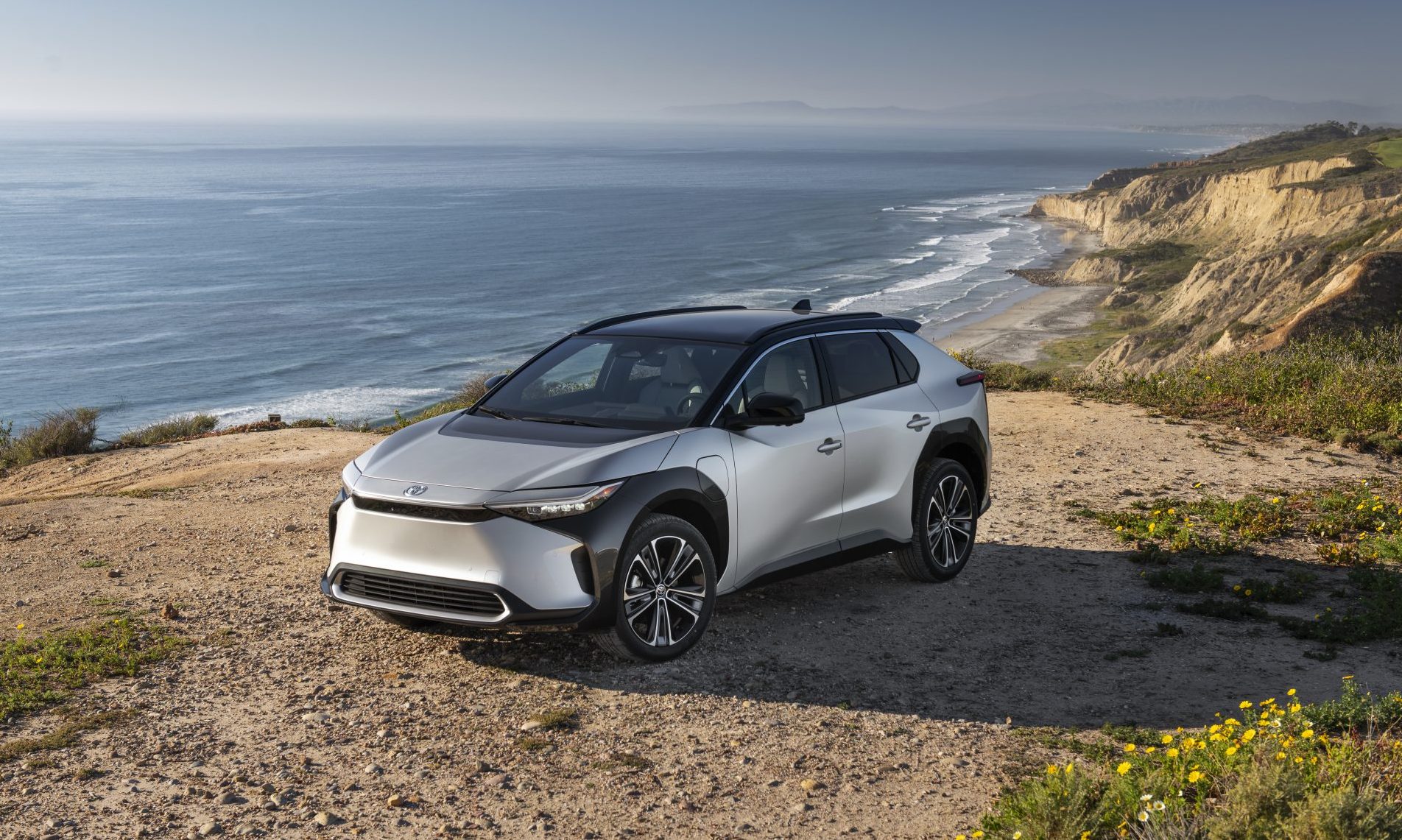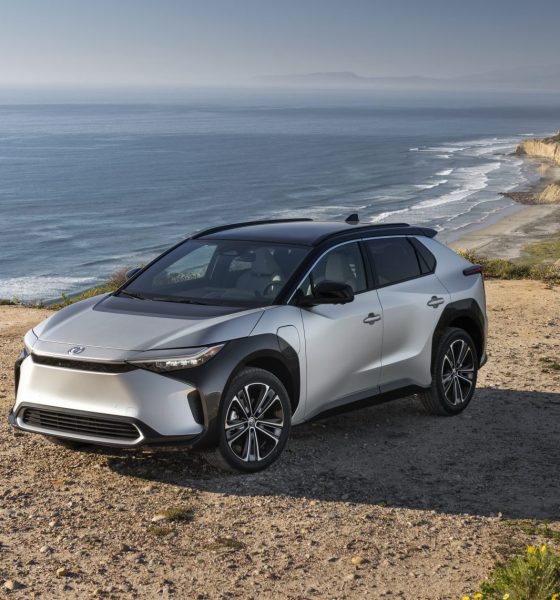Toyota’s bZ4X electric vehicle arrives at dealers this Spring, catalyzing the Japanese automaker’s launch into pure EVs, its first in nearly ten years.
“The all-electric Toyota bZ4X SUV not only looks to further Toyota’s commitment to a carbon-neutral future, but it does so in style,” the company said after launching the vehicle this morning. “Ready to make a fresh mark on the Battery Electric Vehicle (BEV) segment, bZ4X blends bold, modern styling with tech-laden features in an extremely capable platform.”
Credit: Toyota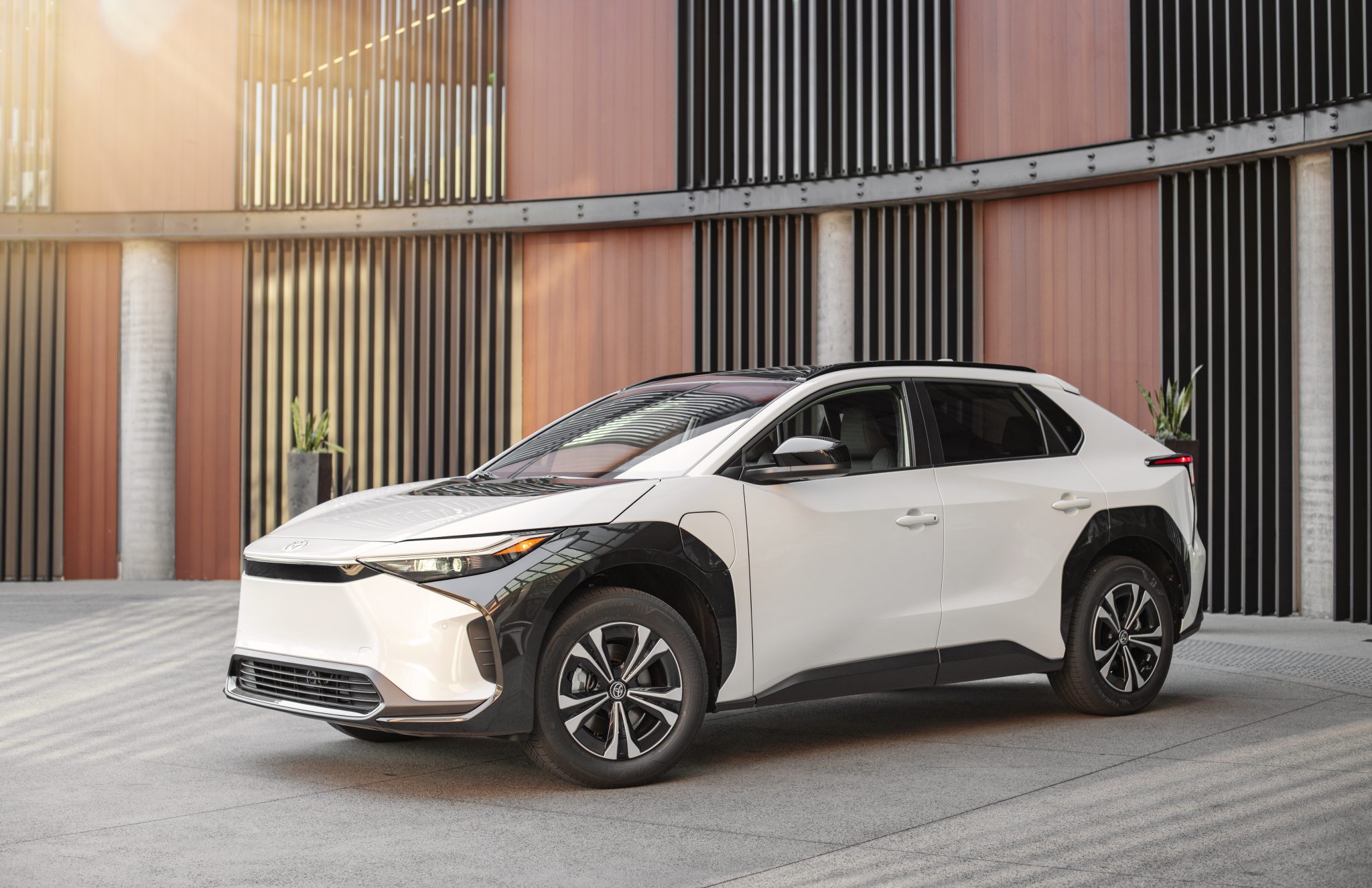
The bZ4X is Toyota’s first addition to the global bZ series, which stands for “Beyond Zero.” Designed and developed with human-centricity at the heart, Toyota said it hopes to provide more than a mobility solution for customers, but also an innovative space for drivers to imagine a new era of the company’s vehicles.
The bZ4X is a competitive and attractive option for electric vehicle buyers. Important metrics like range and performance are at the focal point of any consumer’s decision in the emerging EV sector, and Toyota brought some competitive numbers to the table with its introductory bZ offering. The bZ4X offers 252 miles of range in its XLE front-wheel-drive models and will start at just $42,000. Not to mention, the bZ4X’s body style is a common selection in the U.S. market. Combining functionality with a sleek design, it is neither bulky nor restrictive.
Credit: Toyota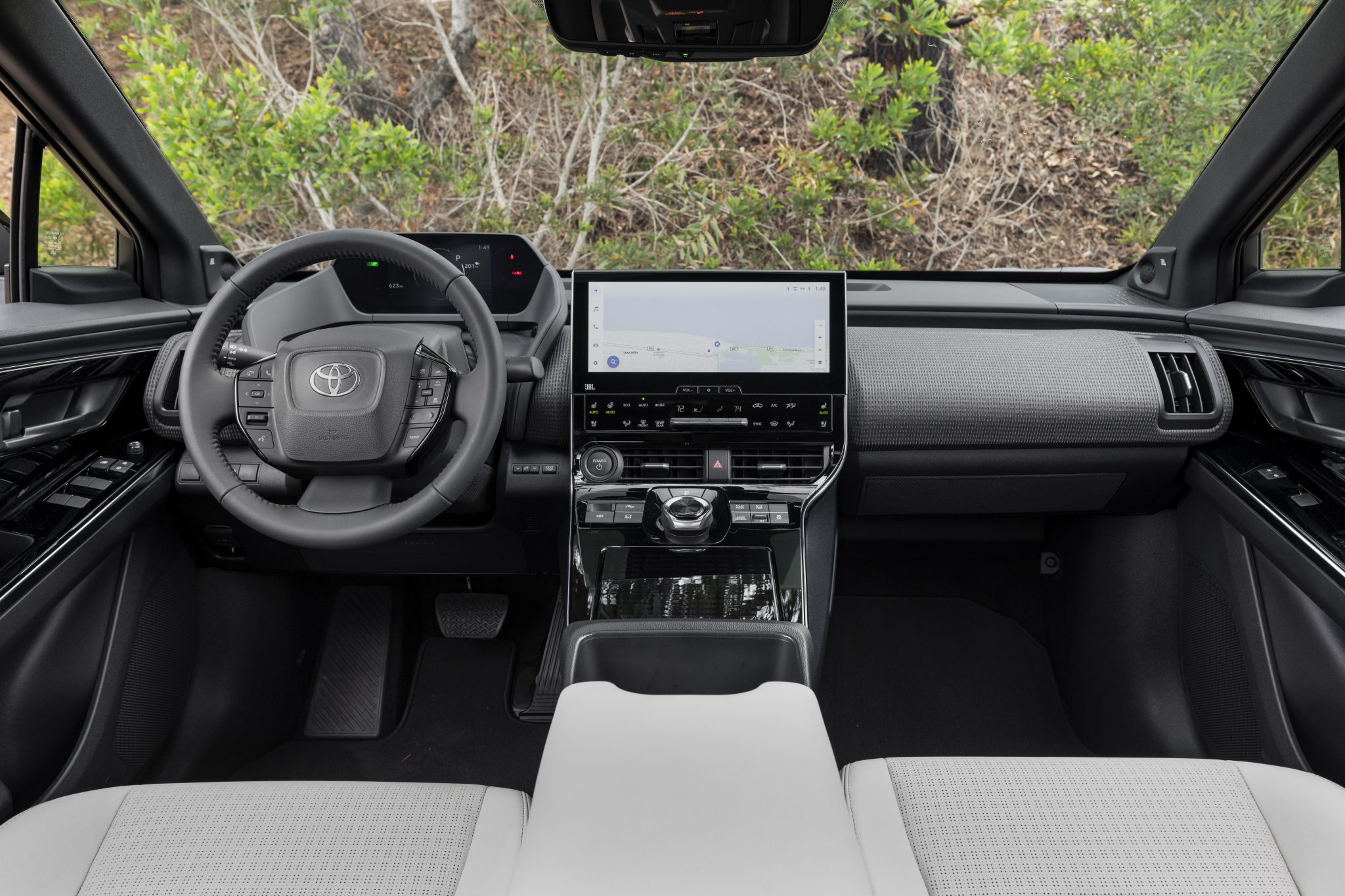
Toyota said the design of the bZ4X is one that focuses on a “dynamically flowing silhouette.” “The profile of the bZ4X is balanced and sleek, with dynamic character lines that flow from front to rear,” the automaker said. It is a sporty look that also encapsulates some futuristic features, like the enclosed grille area that is simply not feasible on a gas-powered vehicle. Despite its design, it still has the classic Toyota look, keeping the vehicle unique in its own way, not veering too far away from the overall feel of its cars.
Four Trim Levels, All Under $50k
Toyota will offer four trim levels for the bZ4X: two grades with XLE and Limited and two drivetrains, front-wheel and all-wheel-drive.
- 2023 Toyota bZ4X XLE FWD – $42,000
- 2023 Toyota bZ4X Limited FWD – $46,700
- 2023 Toyota bZ4X XLE AWD – $44,080
- 2023 Toyota bZ4X Limited AWD – $48,780
Front-Wheel-Drive trim levels will produce 201 horsepower, with All-Wheel-Drive configurations offering slightly more at 214. Instant torque will help the bZ4X achieve a 7.1-second 0-60 MPH time for the FWD trims and just 6.5 seconds for the AWD drivetrains.
All bZ4X models are equipped with a J1772/CCS1 socket, so home and public charging will be a breeze. Toyota said that there is also a 6.6 kW onboard charger, which allows the bZ4X to charge from low to full in about 9 hours with a Level 2 charger at home or in public.
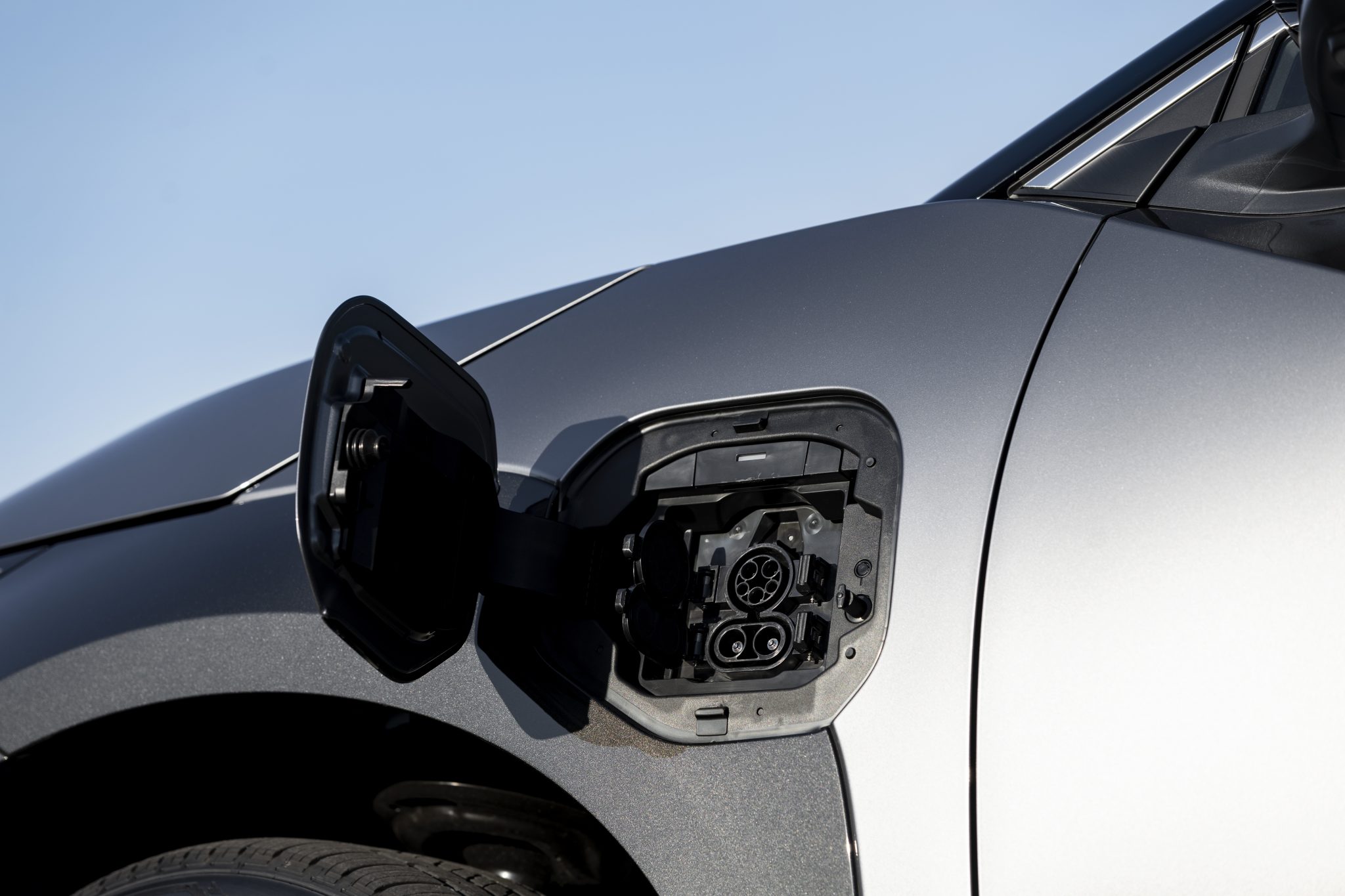
Credit: Toyota
Toyota’s Big Plans for EVs
About a quarter of Toyota’s total sales in the United States in 2021 were of its electrified vehicles, it said. However, these are not pure EVs, and included hydrogen fuel cell electrics, hybrids, and plug-in hybrids.
There are big plans for pure EVs at Toyota, however, despite its focus on other powertrains for many years. Globally, Toyota plans to expand to around 70 electrified models by 2025, featuring 15 dedicated pure EVs. Seven of the fifteen will feature the bZ brand moniker. “This diverse portfolio of electrified products will help propel Toyota toward its goal of carbon neutrality by 2050,” the company added. “Globally, Toyota has put more than 20 million electrified models on the road – with a CO2 emissions reduction effect equivalent to the CO2 emissions reduction of over 5.5 million BEVs. Over the next nine years, Toyota will invest $70+ billion in electrified vehicles as a whole with the target to launch 3.5 million BEVs globally in 2030.”
Toyota debuts bZ4X SUV concept, kicking off its 15 electric vehicle lineup
I’d love to hear from you! If you have any comments, concerns, or questions, please email me at joey@teslarati.com. You can also reach me on Twitter @KlenderJoey, or if you have news tips, you can email us at tips@teslarati.com.

News
Tesla scores major hire as Apple scientist moves to Optimus team
Chen, who advanced from individual contributor to technical lead during his time at Apple, noted that he was blown away by Tesla’s efforts and synergy.
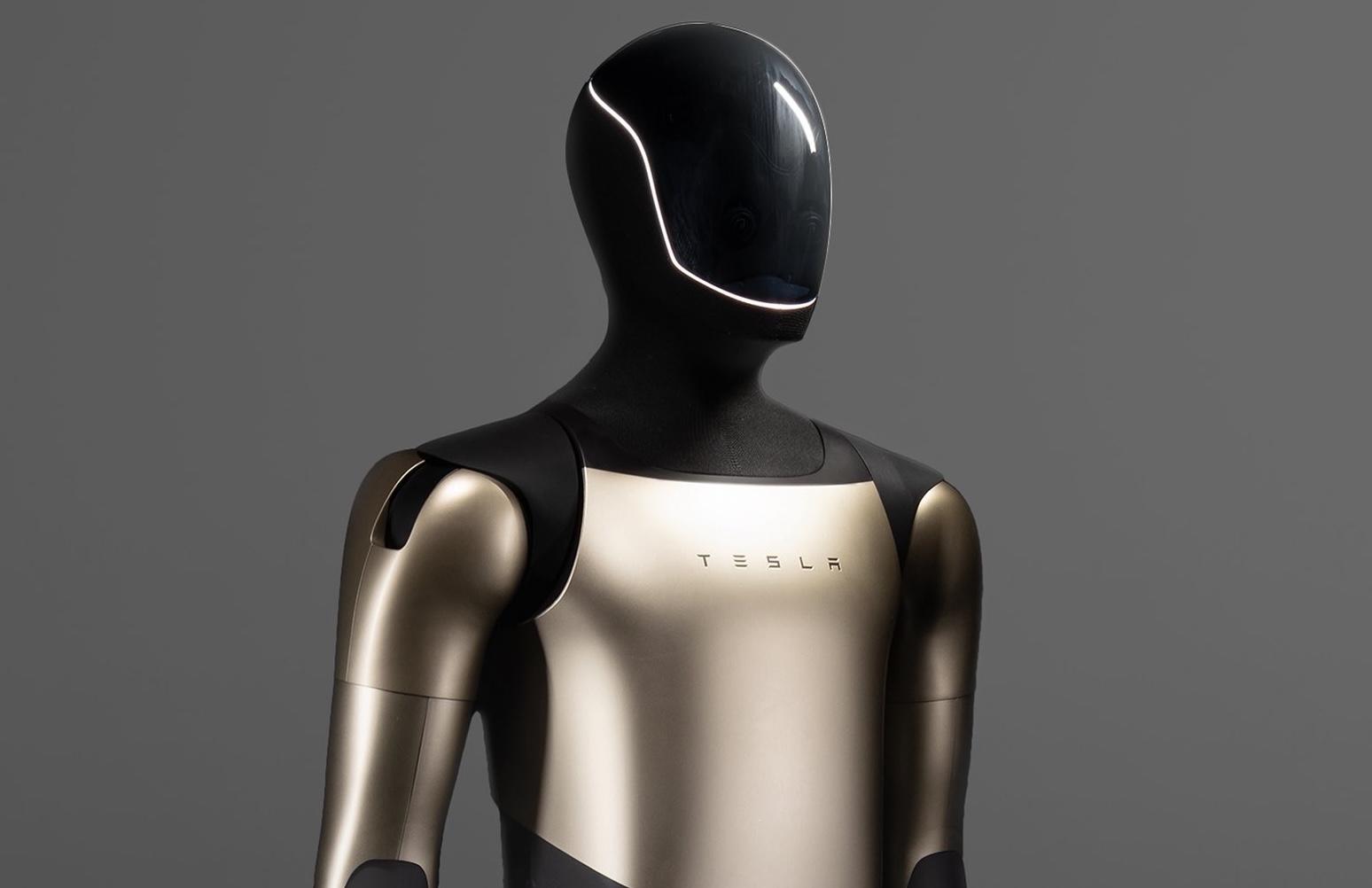
Former Apple research scientist Yilun Chen has left the tech giant to join Tesla’s Optimus AI team. Chen, who advanced from individual contributor to technical lead during his time at Apple, noted that he was blown away by Tesla’s efforts and synergy.
Apple veteran closes a major chapter
In a farewell note, Yilun Chen reflected on his tenure at Apple as a period defined by rapid growth and exposure to notable internal projects, some of which remain unreleased. His roles spanned engineering, research, early product incubation, and hands-on prototyping, allowing him to build expertise across both mature and emerging teams.
Chen credited mentors, colleagues, and cross-functional collaborators for shaping his trajectory, calling the experience unforgettable and emphasizing how each team taught him different lessons about scaling technology, guiding product vision, and navigating fast-moving research environments. “Each role has offered me invaluable unique lessons… My deepest gratitude goes to my colleagues, mentors and friends,” he wrote.
Tesla’s Optimus lab secured the hire
Chen said the move to Tesla was driven by the momentum surrounding Optimus, a humanoid robot powered by LLM-driven reasoning and Physical AI. After visiting Tesla’s Optimus lab, he admitted that he was “totally blown away by the scale and sophistication of the Optimus lab and deep dedication of people when I got to visit the office.”
His first week at Tesla, he noted, involved spontaneous deep-tech discussions, a flat team structure, rapid prototyping cycles, and what he called a “crazy ideas with super-fast iterations” culture. Chen emphasized that the team’s ambition, as well as its belief that humanoid robots are now within reach, creates an energy level that feels aimed at changing the world.
“You can feel the energy to change the world here,” he wrote in a post on social media.
Elon Musk
Elon Musk gives nod to SpaceX’s massive, previously impossible feat
It was the booster’s 30th flight, a scenario that seemed impossible before SpaceX became a dominant force in spaceflight.
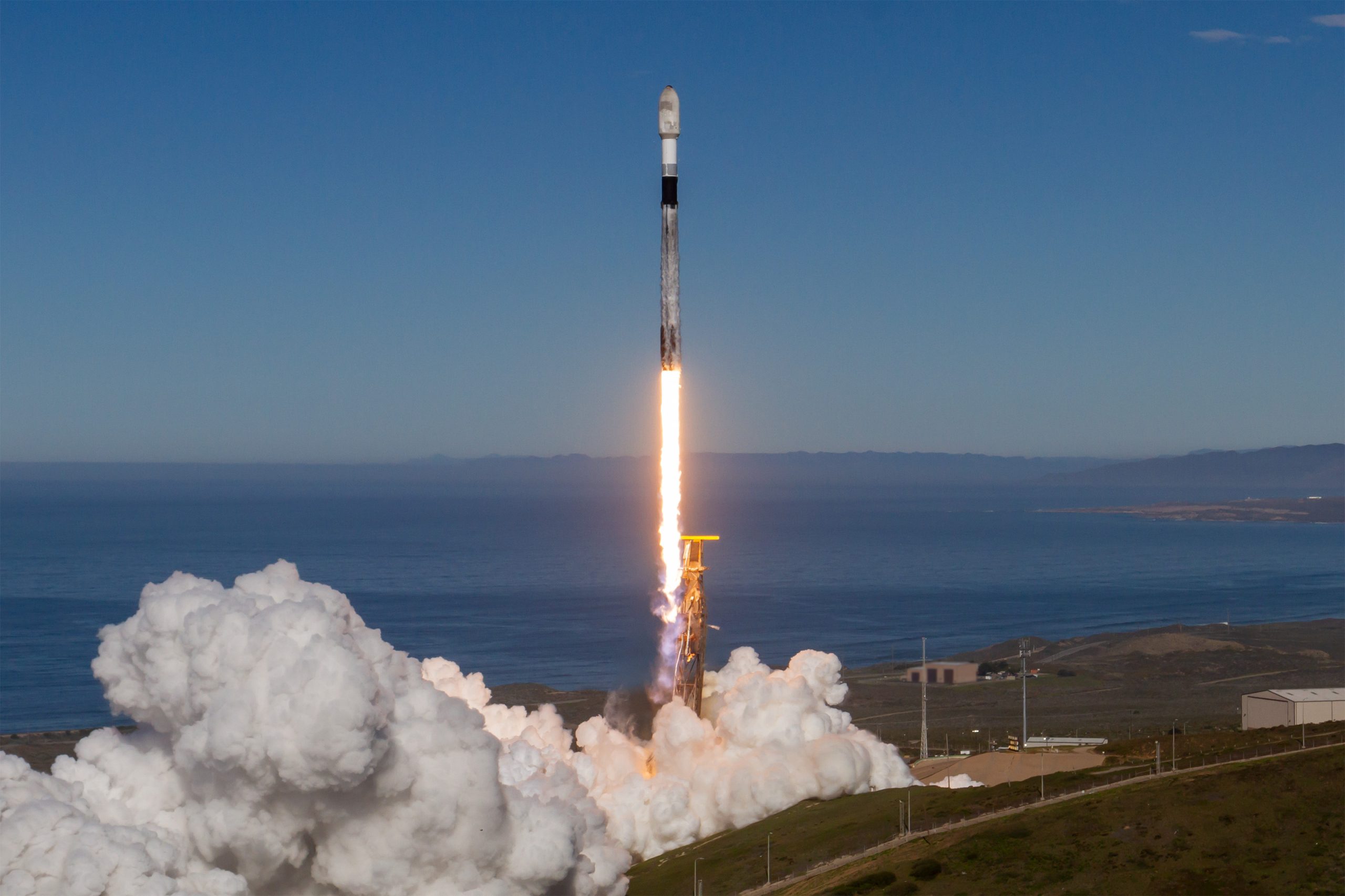
Elon Musk gave a nod to one of SpaceX’s most underrated feats today. Following the successful launch of the Transporter-15 mission, SpaceX seamlessly landed another Falcon 9 booster on a droneship in the middle of the ocean.
It was the booster’s 30th flight, a scenario that seemed impossible before SpaceX became a dominant force in spaceflight.
Elon Musk celebrates a veteran Falcon 9 booster’s feat
SpaceX completed another major milestone for its Smallsat Rideshare program on Friday, successfully launching and deploying 140 spacecraft aboard a Falcon 9 from Vandenberg Space Force Base. The mission, known as Transporter-15, lifted off two days later than planned after a scrub attributed to a ground systems issue, according to SpaceFlight Now. SpaceX confirmed that all payloads designed to separate from the rocket were deployed as planned.
The Falcon 9 used for this flight was booster B1071, one of SpaceX’s most heavily flown rockets. With its 30th mission completed, it becomes the second booster in SpaceX’s fleet to reach that milestone. B1071’s manifest includes five National Reconnaissance Office missions, NASA’s SWOT satellite, and several previous rideshare deployments, among others. Elon Musk celebrated the milestone on X, writing “30 flights of the same rocket!” in his post.
Skeptics once dismissed reusability as unfeasible
While rocket landings are routine for SpaceX today, that was not always the case. Industry veterans previously questioned whether reusable rockets could ever achieve meaningful cost savings or operational reliability, often citing the Space Shuttle’s partial reusability as evidence of failure.
In 2016, Orbital ATK’s Ben Goldberg argued during a panel that even if rockets could be reusable, they do not make a lot of sense. He took issue with Elon Musk’s claims at the time, Ars Technica reported, particularly when the SpaceX founder stated that fuel costs account for just a fraction of launch costs.
Goldberg noted that at most, studies showed only a 30% cost reduction for low-Earth orbit missions by using a reusable rocket. “You’re not going to get 100-fold. These numbers aren’t going to change by an order of magnitude. They’re just not. That’s the state of where we are today,” he said.
Former NASA official Dan Dumbacher, who oversaw the Space Launch System, expressed similar doubts in 2014, implying that if NASA couldn’t make full reusability viable, private firms like SpaceX faced steep odds.
News
Tesla AI and Autopilot VP hints that Robovan will have RV conversions
Tesla’s vice president of AI and Autopilot software, Ashok Elluswamy, hinted at the linitiative in a reply to Y Combinator CEO Garry Tan.
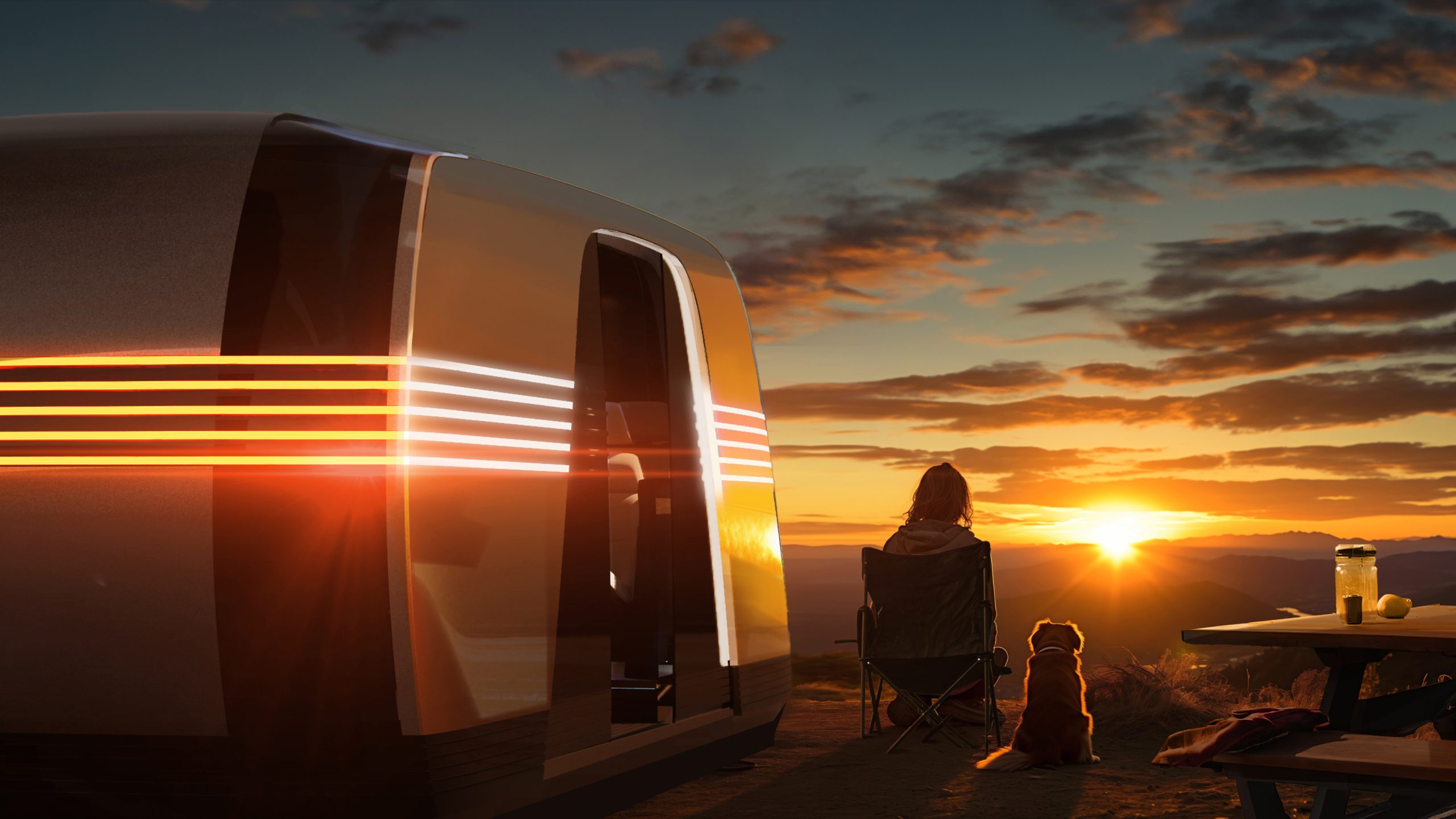
It appears that Tesla is indeed considering an RV in its future pipeline, though the vehicle that would be converted for the purpose would be quite interesting. This is, at least, as per recent comments by a Tesla executive on social media platform X.
Robovan as an RV
Tesla’s vice president of AI and Autopilot software, Ashok Elluswamy, hinted at the linitiative in a reply to Y Combinator CEO Garry Tan, who called for a startup to build RVs with Full Self-Driving capabilities. In his reply, Elluswamy simply stated “On it,” while including a photo of Tesla’s autonomous 20-seat people mover.
Tesla unveiled the Robovan in October 2024 at the “We, Robot” event. The vehicle lacks a steering wheel and features a low floor for spacious interiors. The vehicle, while eclipsed by the Cybercab in news headlines, still captured the imagination of many, as hinted at by X users posting AI-generated images of Robovan RV conversions with beds, kitchens and panoramic windows on social media platforms. One such render by Tesla enthusiast Mark Anthony reached over 300,000 views on X.
Elon Musk on the Robovan
Elon Musk addressed the Robovan’s low profile in October 2024, stating the van uses automatic load-leveling suspension that raises or lowers based on road conditions. The system maintains the futuristic look while handling uneven pavement, Musk wrote on X. The CEO also stated that the Robovan is designed to be very airy inside, which would be great for an RV.
“The view from the inside is one of extreme openness, with visibility in all directions, although it may appear otherwise from the outside. The unusually low ground clearance is achieved by having an automatic load-leveling suspension that raises or lowers, based on smooth or bumpy road conditions,” Musk stated.
Elluswamy’s response on X suggests that Tesla is considering a Robovan RV conversion, though it would be interesting to see how the company will make the vehicle capable of reaching campsites. The Robovan has a very low ground clearance, after all, and campsites tend to be in unpaved areas.
